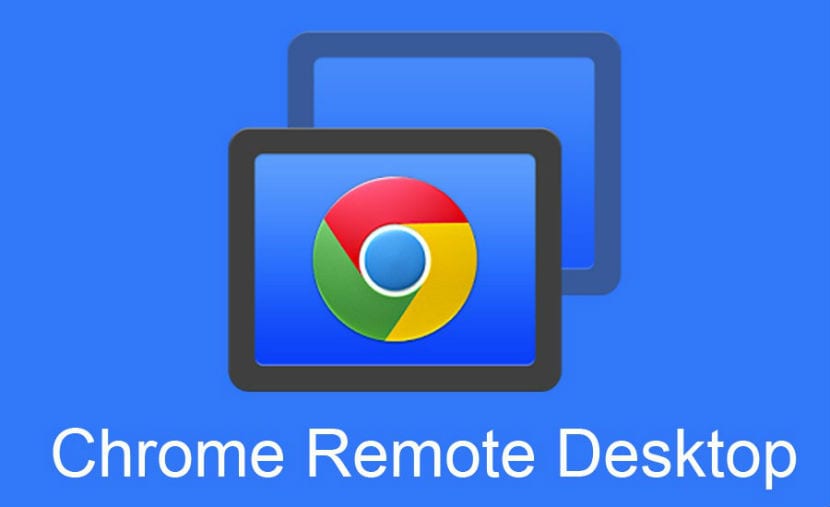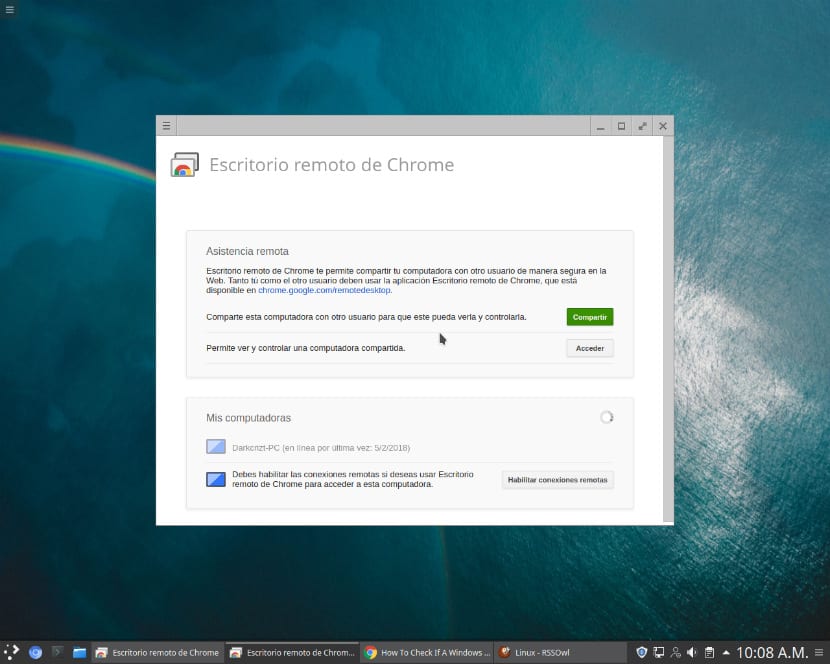
The options to be able access your computer remotely There are many, this time we will use the tool that Google offers us with its Google Chrome web browser using an extension called Chrome Remote Desktop.
Chrome Remote Desktop is completely cross-platform allowing users to remotely access another computer through the Chrome browser or a Chromebook.
To be able to use this tool remote access, it is extremely necessary to have the Google Chrome browser installed in our system.
How to use Chrome Remote Desktop?
The first step is install the extension in our browser, we can do it from this urlThis must be installed on both computers since the extension acts as a client-server.
Installation done, we can open this function from the extensions tab or writing in the address bar chrome: // apps /, where we will find it already installed, we just have to run it and it will show us a screen like this:

Now we will be presented with a start configuration or proceed directly to connect or give our access code to connect remotely.
I must also say that we can access from Android since there is an application to connect from our Smartphone / Tablet or any device with Android.
In order to configure our equipment so that we can access it remotely, we just have to click where it says "Share" and a sale will open where it shows us the conditions of use and where we must click to download the extension plugin in a .deb package or this one we can download it from here.
We install this package with our preferred manager or from the terminal. For the installation from the terminal we execute:
sudo dpkg -i chrome-remote-desktop*.deb
Now we must continue with the following steps that indicate us from the help page of the extension.
Create a virtual desktop session
If you have Ubuntu 12.04 version, skip this series of steps and just go straight to the extension in the navigator and start using it.
In / usr / share / xsessions /, find the .desktop file for your desired desktop environment.
For example, Cinnamon has a file named "cinnamon.desktop" with the following command: gnome-session –session = cinnamon
Create a file named .chrome-remote-desktop-session in the main directory that includes the following content:
exec /usr/sbin/lightdm-session <YOUR_EXEC_COMMAND>
Replace with the command that appears at the end of the .desktop file:
In the example for Cinnamon, the correct command is:
exec /usr/sbin/lightdm-session 'gnome-session --session=cinnamon'
Unity desktops require some additional code. The complete command is as follows:
DESKTOP_SESSION=ubuntu XDG_CURRENT_DESKTOP=Unity XDG_RUNTIME_DIR=/run/user/$(id -u) exec /usr/sbin/lightdm-session 'gnome-session --session=ubuntu'.
Save the file named ".chrome-remote-desktop-session".
We must close the browser completely, then we access the extension again and now we just have to click again where it says "share" but en this time it will show us an access code which we will share with the computer that will connect remotely.
As well We can make use of our Google account so that when we access from any computer our equipment shows us available without the need to be requesting an access code every time we are going to access remotely.
The operation of the extension has a lot to improve, but within the options that it allows us are the basic ones, such as being able to take screenshots, paste text from the computer that is controlling to which we are connected, I have not tested if this function is bidirectional.
Finally I must add that the connection session to the computer does not last long so I have not been able to find a way to keep the computer session longer, the average is 15 min, so after this time it expires and we will have to reconnect or request another access code.
In conclusion, although there are other options such as TeamViewer, we do not always have the option of being able to install applications on work or school computers, so this extension is extremely useful if we have the Chrome browser installed on the computer.